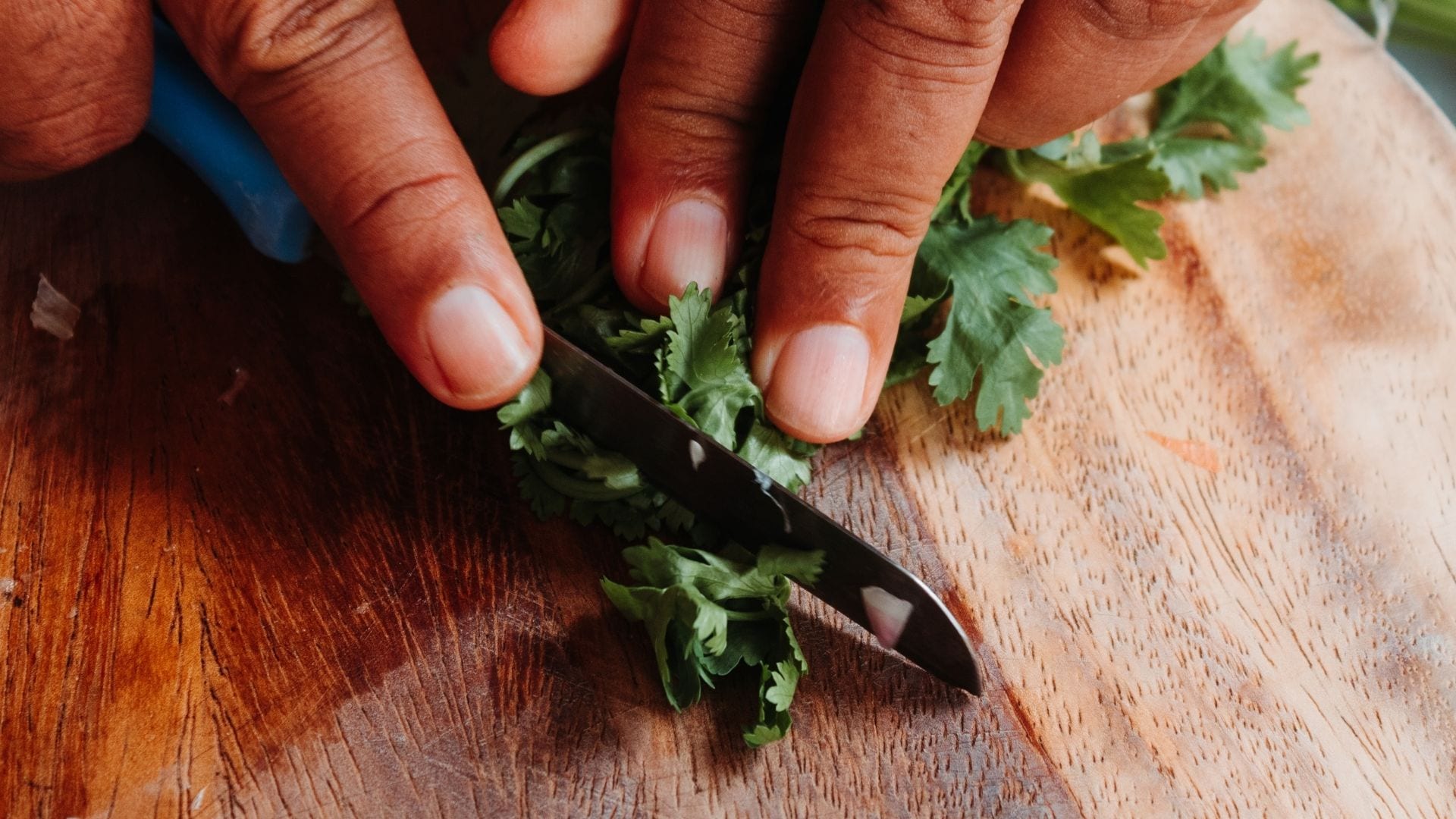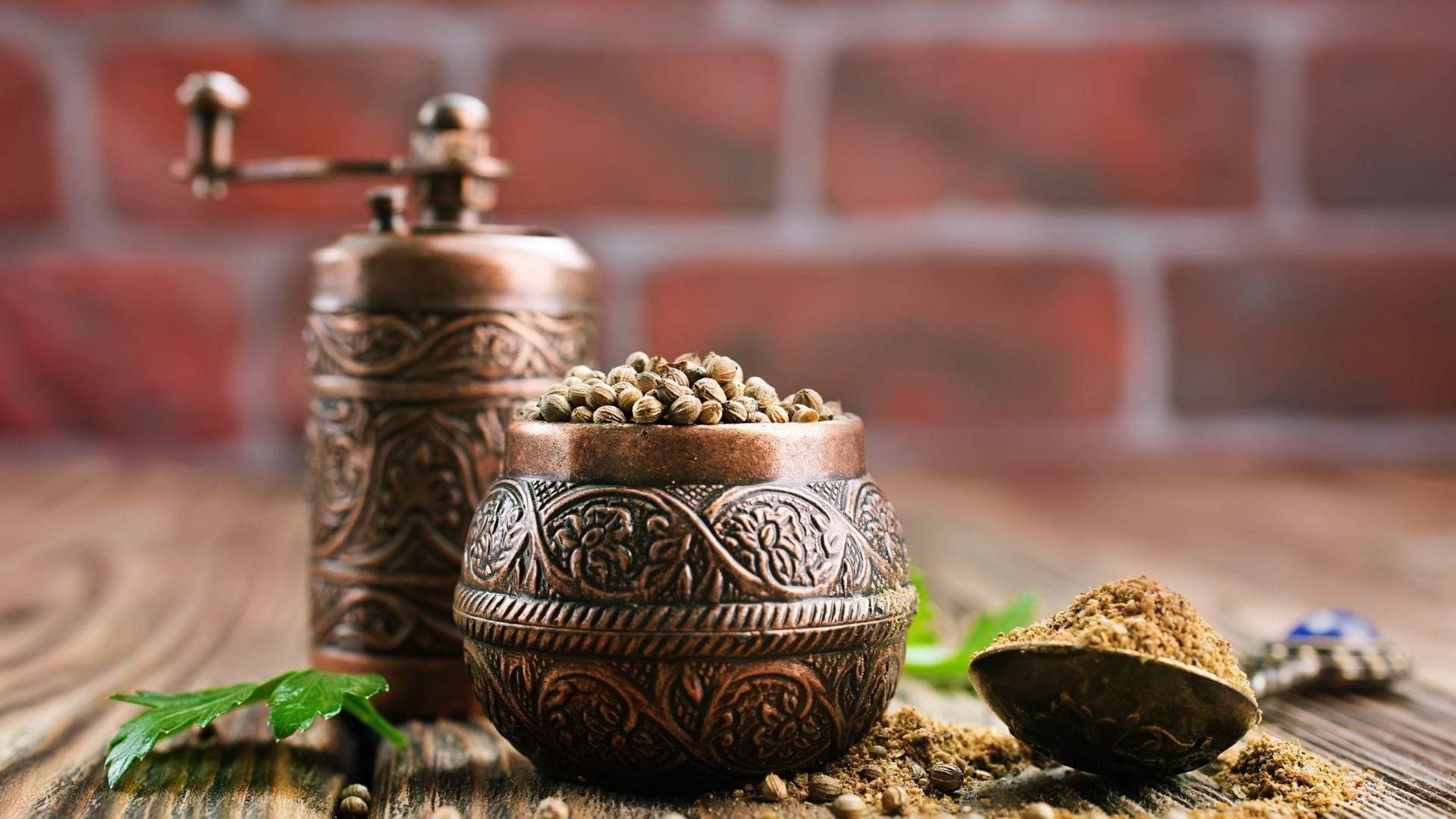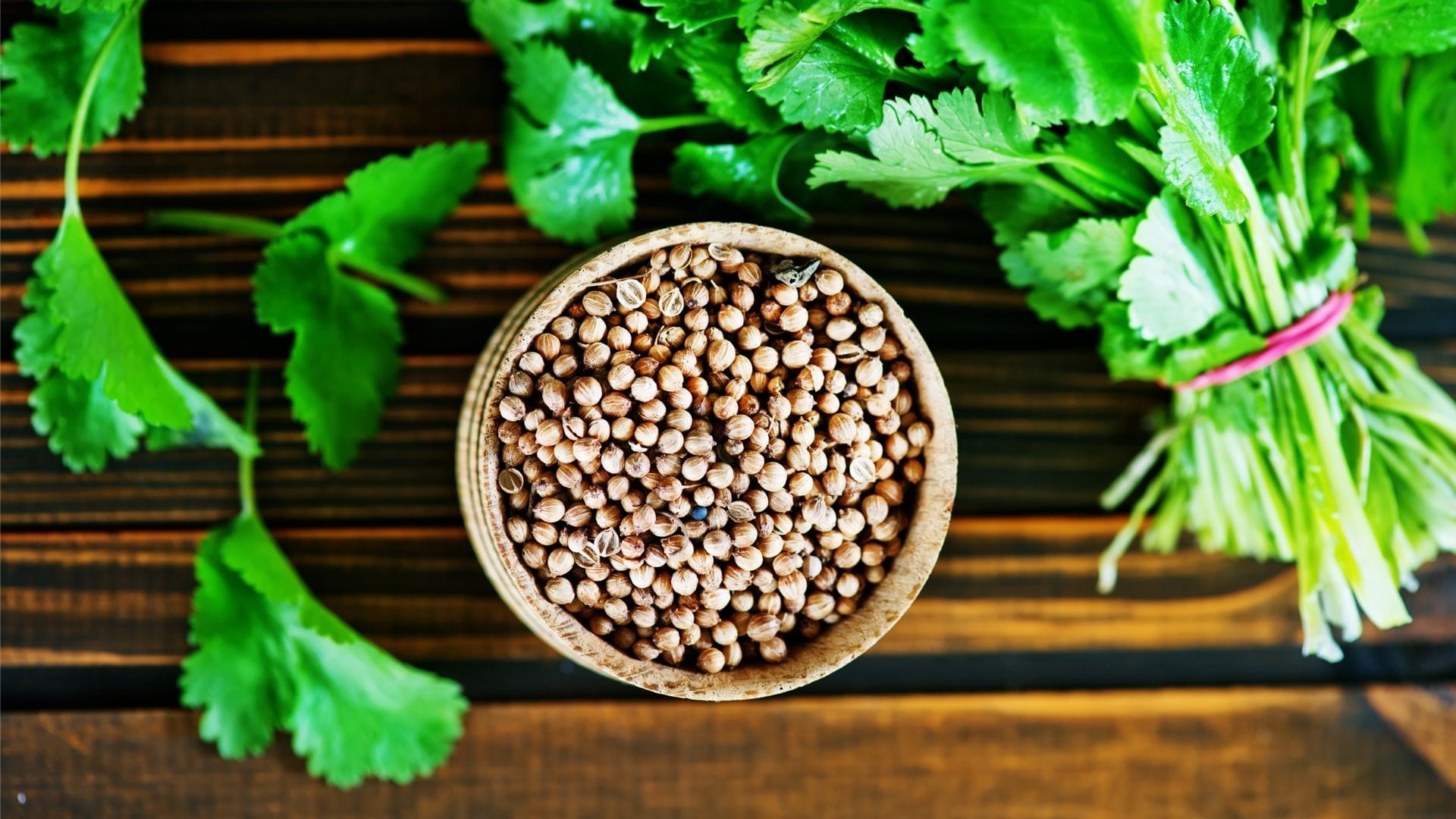Coriander: A herb of culture and refinement, pleasure and delight – but why does it taste like soap to so many people? You’ll learn this and much more in this article.

Coriander – an oft used herb both in the traditional cuisines of East Asia as well as in South America. Like many herbs, coriander has great health benefits. To learn which gene is responsible for the aversion that some people have to it, what it can do for your health and how this green herb is used, read on.
A long journey over many continents
Coriander is an annual belonging to the umbellifer family, where we also get carrots, celery, anise and cumin to name just a few. From top to bottom, every part of the plant can be used. This fresh herb, including its stalks, leaves, seeds and even the seldom used roots can add a distinctive note to any dish.
This green herb has a long and storied past. Its first use was recorded as early as 5000 years BC. Coriander originates from the area around the Mediterranean and the Middle East. In Latin cultures, coriander was already being used to refine breads and preserve meats. The British first started using the herb, also known as Arabic parsley, in around 1000 AD. From there, this polarising spice spread to the rest of Europe. The herb first arrived on the shores of South America in the 17th century where it made its way into many traditional dishes.
Love it or hate it – what’s genetics got to do with it?
There are two components involved in some people’s distaste for coriander: One is its aroma, the second is a human gene.
How would you describe the scent of coriander? Pungent but with a fruity aroma? Some people perceive an acute, soapy odour. Certain aldehydes present in the herb are responsible for this unique scent. Aldehydes are chemical compounds that give foods their characteristic smells.
Scientists wanted to get down to the root of the coriander mystery, so they designed a study to investigate people’s perceptions of its scent and taste. Those participants who reported experiencing a soapy odour underwent a more precise examination of their olfactory system – the main agent responsible for the perception of scents. This system supports our sense of smell through the use of olfactory receptors.
The scientists found that participants with an aversion to coriander possessed an olfactory receptor with a particular genetic variation that other participants did not have. This genetic variation caused certain people to perceive the aldehydes present in the herb as soapy.
Coriander – a therapeutic herb from antiquity
Coriander has been used since early times to treat people’s gastrointestinal tract if, for instance, they had a lack of appetite or digestive problems. The herb was also used to deal with insomnia and phobias.
Coriander’s leaves and its stalk contain a variety of beneficial substances. Beside vitamins B1 and B2, it also contains provitamin A and iron. Do you often eat coriander? Because you can also partially satisfy your daily requirement of vitamin C with this green miracle herb. The average amount of 25 mg of vitamin C per 100 g it contains is relatively high, but you’d have to consume large quantities of coriander to really get enough vitamin C to cover your daily requirement. Chutneys or the generous portions of the herb found in Asian dishes are ideal for doing just that.
Coriander seeds provide benefits that are every bit as miraculous. Coriander contains antioxidants and has antimicrobial properties. This is due in part to the presence of essential oils, but also polyphenols, a class of antioxidants. Both components can be found both in the fresh herb as well as in the dried seeds which, in comparison to the leaves, contain more essential oils.
Both substances provide a lot of health benefits. Inside the human body, the antioxidant effects can be attributed to the polyphenols and, in particular, to the essential oil, linalool. Scientific studies indicate that linalool, consumed in sufficient quantities, can positively effect blood lipids and blood pressure.

An aromatic smorgasbord – from the leaf down to the seed
But have you truly realised the full potential of your coriander? South American cuisine makes use both of the fresh coriander leaves as well as the dried seeds. Typically, fresh cilantro, as it’s known in Latin America, is mixed with cooked rice and beans as well as garlic. When you’re cooking your rice, it doesn’t hurt to throw in a few dried seeds. Their flavours will be enhanced by the cooking process and give the rice a unique aroma.
Coriander has a special place in Indian cuisine. It is a main ingredient in chutneys and the well-known garam masala. The grains are often first roasted in a pan to let their full aromatic potential emerge. In Middle Eastern cuisines, the combination spice known as baharat is dominated by coriander. The mixture is perfect on baked potatoes or in a couscous salad.
Try something new with coriander! Here’s an easy recipe for coriander chutney that’s just the thing for the warmer seasons:
Recipe: coriander chutney (one portion)
- 1 bunch of fresh coriander
- 1 lemon
- 1 tsp cumin
- Ginger
- Olive oil
- Salt
- Chilli (fresh or dried)
Clean the coriander thoroughly. Remove the leaves from the stems and chop them into fine pieces with a knife. Place the stems into a mixer and blend them to a paste. Add olive oil as needed and a splash of water until the consistency of the mixture is right. Squeeze the juice from half a lemon into the mixer and add a piece of peeled ginger about 1 cm in length. Also add a half teaspoon of ground cumin to the chutney. As soon as all the ingredients are well mixed, place the paste into a bowl and stir in the finely chopped coriander leaves. For those who like it a bit spicy, chop in a fresh chilli or add a pinch of dried chilli to taste.
To store your coriander, you can either place a fresh bunch in a glass of water in the fridge or wrap it in a moist cloth. The herb will keep in your Fruit & Vegetable safe for up to two weeks. If you only have a small amount of coriander or would always like to have small amounts available, your ice cube tray is ideally suited to the task! Place the finely chopped coriander along with a little olive oil or water into the moulds of the ice cube tray. That way you’ll always have a bit of this great herb ready to flavour any dish. Besides that, your coriander will keep even longer in your Liebherr fridge!
For enthusiasts: tips for growing your own at home
Coriander can be grown easily in your own garden or on the balcony. Starting it off inside is a great idea. The seeds can be placed in moist soil starting in March. Covered by a thin layer of potting soil and left in a warm, well-lit corner these light-loving seeds will germinate in about ten days. But to achieve its full glory, the herb should be replanted outside. Starting in April, the herb can be moved outdoors – but caution is recommended: This spice prefers a sunny to half-shady location, so you should let the herb gradually get used to more intense sunlight. From July onward, the first blooms will start to appear. It’s from those that you will later be able to harvest the coriander seeds. You can either use the seeds in the kitchen as a spice, or you can save a few for sowing next year’s crop.

#coriander, #corianderseeds, #spice, #herb, #cilantro, #mediterranean, #indian, #southamerican, #chutney, #genes, #tastereceptors, #aldehydes, #healthbenefits, #vitaminC, #vitaminB1, #vitaminB2, #vitaminB6, #iron, #provitaminA, #bloodlipids, #bloodpressure, #lightlovingseeds, #icecubetray